Abstract
With neurodevelopmental outcome of very low birthweight (VLBW) infants being adversely affected by inadequate nutrition during the first few weeks of life, there is an urgent need for more specific nutritional data on the sick VLBW ventilator dependent infant. The development of a new mass spectrometry gas analysis indirect calorimetry system which is non-invasive and can operate over several hours or days is described. Technical evaluation of each of the components of the system indicates a total random error of less than 5%. Systematic error was determined using gas infusions which simulated carbon dioxide production and oxygen consumption. The relative error in the measurement of carbon dioxide production was less than or equal to 1.5% (coefficient of variation (CV) 6.0%)) with carbon dioxide infusion rates ranging from 3.86 to 13.98 ml/min. The relative error in oxygen 'consumption' was less than or equal to 4.3% (CV 2.8%) for infusions of oxygen at rates of 7.5 to 14.80 ml/min. With nitrogen infusions simulating oxygen consumptions of 2.0 and 5.5 ml/min the relative error in the calculated nitrogen infusion was 1.5% (CV 4.1%) and 1.4% (CV 5.7%) respectively. Clinical studies on 10 infants demonstrated a mean energy expenditure of 161.7 kJ/kg/day and a respiratory quotient in excess of 1.0. The energy expenditure of ventilated VLBW infants may be less than previously indicated and the energy mix and nitrogen content of parenteral nutrition regimens recommended for these infants may be inappropriate.
Full text
PDF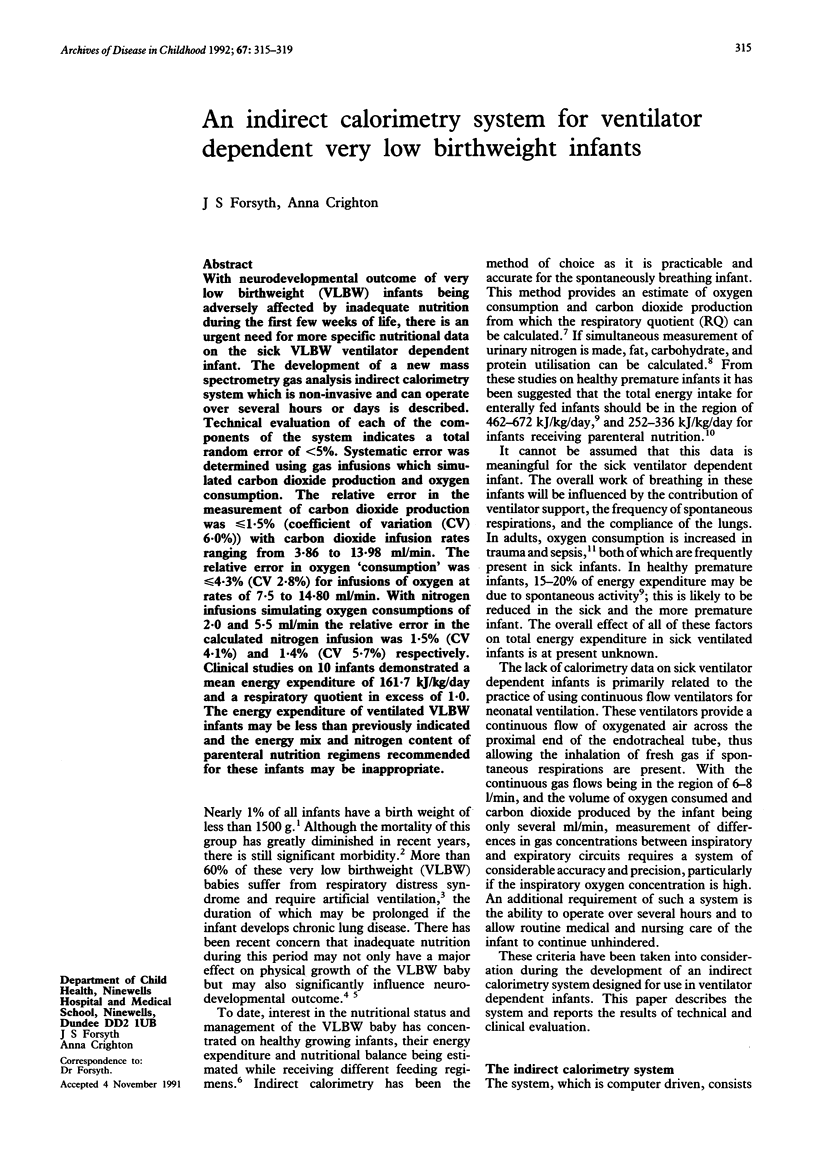
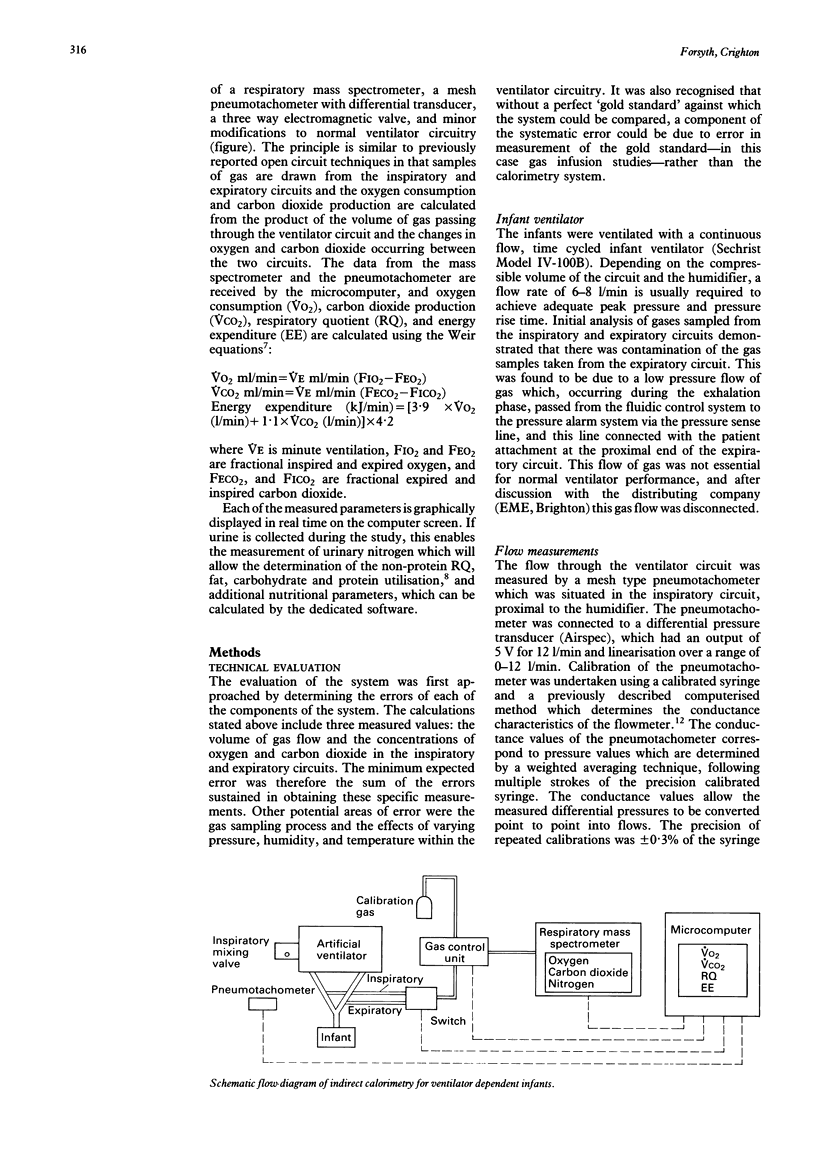
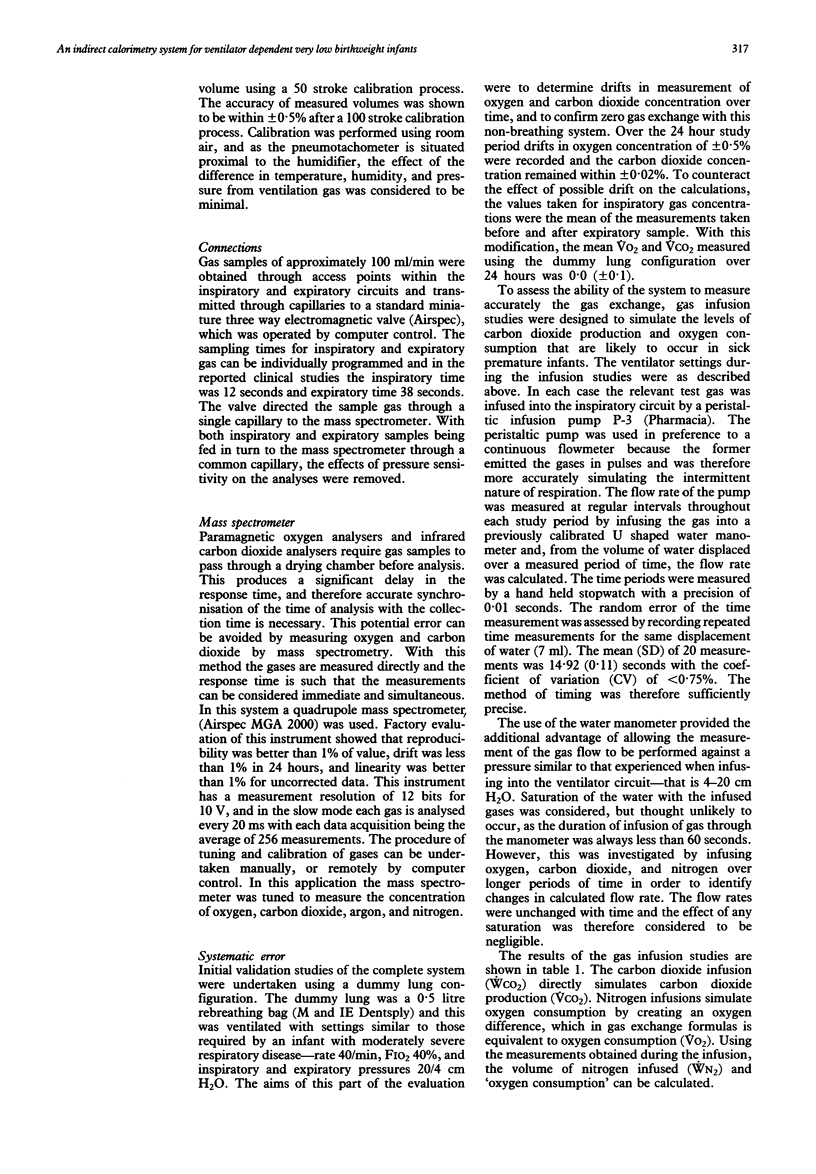
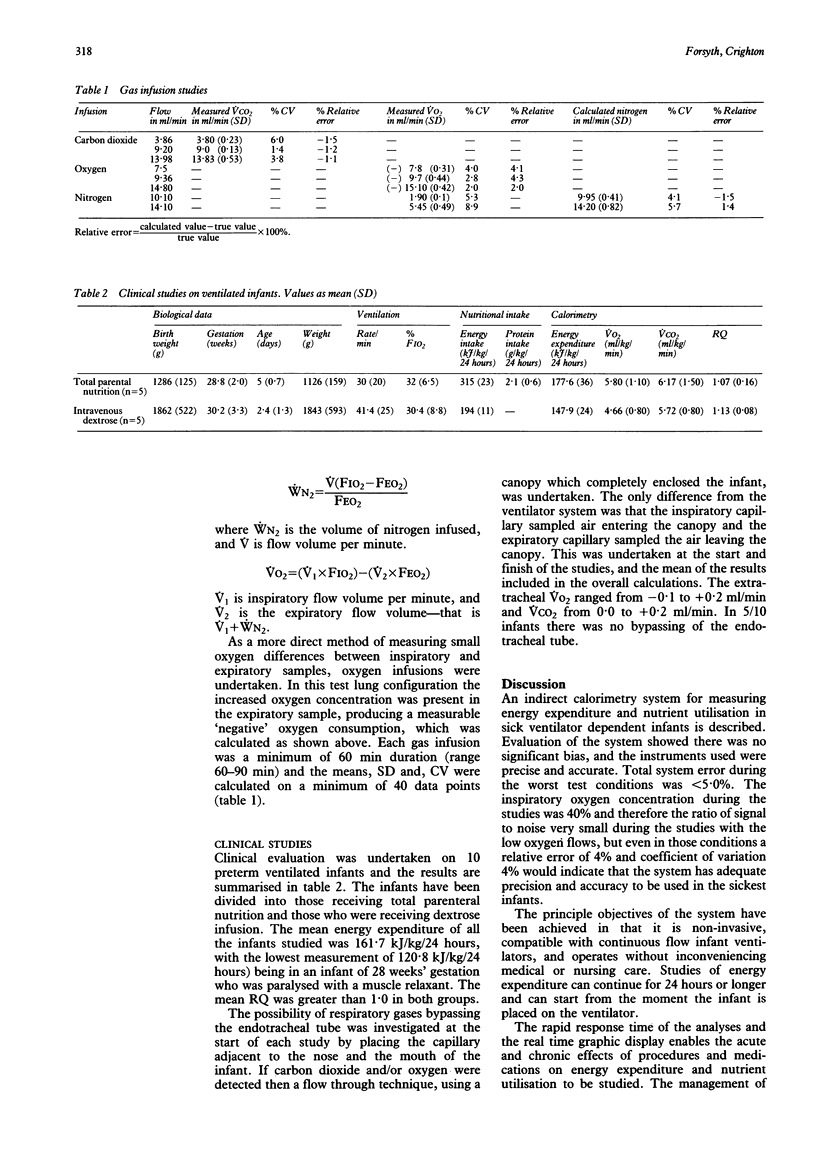
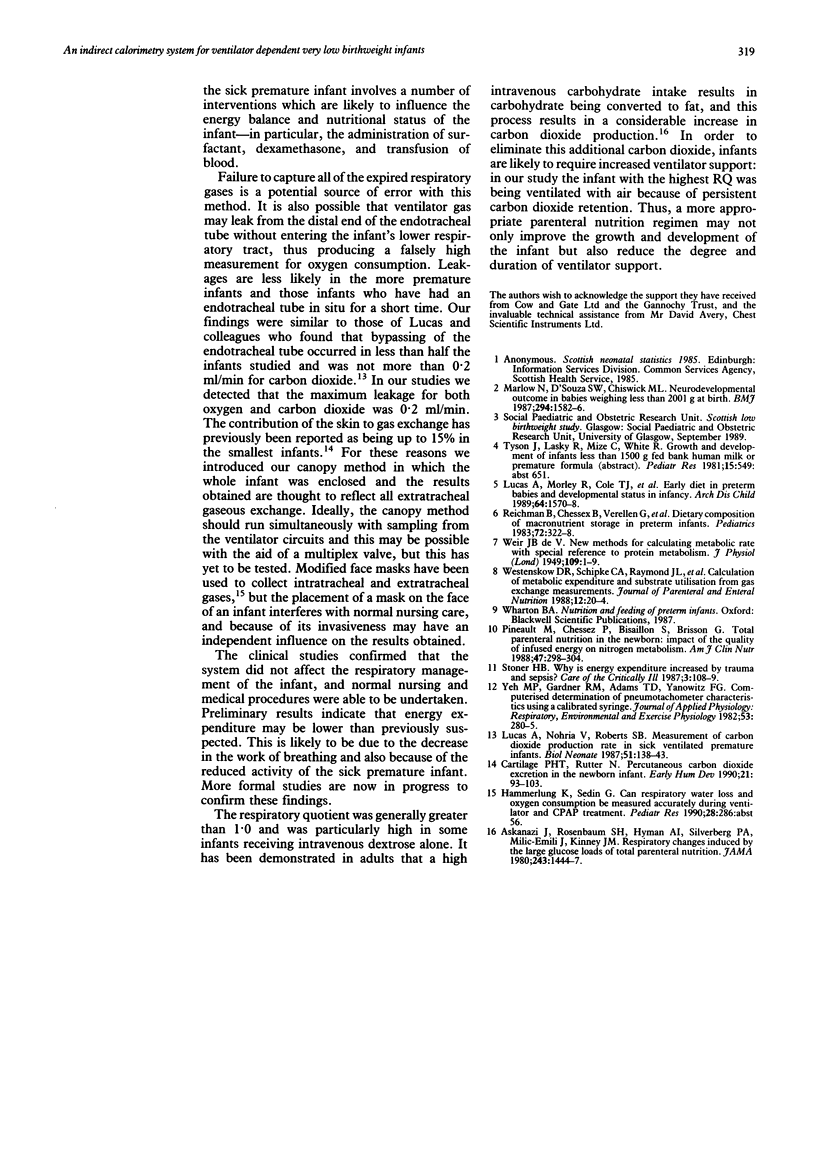
Selected References
These references are in PubMed. This may not be the complete list of references from this article.
- Askanazi J., Rosenbaum S. H., Hyman A. I., Silverberg P. A., Milic-Emili J., Kinney J. M. Respiratory changes induced by the large glucose loads of total parenteral nutrition. JAMA. 1980 Apr 11;243(14):1444–1447. [PubMed] [Google Scholar]
- Cartlidge P. H., Rutter N. Percutaneous carbon dioxide excretion in the newborn infant. Early Hum Dev. 1990 Feb;21(2):93–103. doi: 10.1016/0378-3782(90)90038-k. [DOI] [PubMed] [Google Scholar]
- Lucas A., Morley R., Cole T. J., Gore S. M., Davis J. A., Bamford M. F., Dossetor J. F. Early diet in preterm babies and developmental status in infancy. Arch Dis Child. 1989 Nov;64(11):1570–1578. doi: 10.1136/adc.64.11.1570. [DOI] [PMC free article] [PubMed] [Google Scholar]
- Lucas A., Nohria V., Roberts S. B. Measurement of carbon dioxide production rate in sick ventilated premature infants. Biol Neonate. 1987;51(3):138–143. doi: 10.1159/000242644. [DOI] [PubMed] [Google Scholar]
- Marlow N., D'Souza S. W., Chiswick M. L. Neurodevelopmental outcome in babies weighing less than 2001 g at birth. Br Med J (Clin Res Ed) 1987 Jun 20;294(6587):1582–1586. doi: 10.1136/bmj.294.6587.1582. [DOI] [PMC free article] [PubMed] [Google Scholar]
- Pineault M., Chessex P., Bisaillon S., Brisson G. Total parenteral nutrition in the newborn: impact of the quality of infused energy on nitrogen metabolism. Am J Clin Nutr. 1988 Feb;47(2):298–304. doi: 10.1093/ajcn/47.2.298. [DOI] [PubMed] [Google Scholar]
- Reichman B., Chessex P., Verellen G., Putet G., Smith J. M., Heim T., Swyer P. R. Dietary composition and macronutrient storage in preterm infants. Pediatrics. 1983 Sep;72(3):322–328. [PubMed] [Google Scholar]
- Westenskow D. R., Schipke C. A., Raymond J. L., Saffle J. R., Becker J. M., Young E. W., Cutler C. A. Calculation of metabolic expenditure and substrate utilization from gas exchange measurements. JPEN J Parenter Enteral Nutr. 1988 Jan-Feb;12(1):20–24. doi: 10.1177/014860718801200120. [DOI] [PubMed] [Google Scholar]
- Yeh M. P., Gardner R. M., Adams T. D., Yanowitz F. G. Computerized determination of pneumotachometer characteristics using a calibrated syringe. J Appl Physiol Respir Environ Exerc Physiol. 1982 Jul;53(1):280–285. doi: 10.1152/jappl.1982.53.1.280. [DOI] [PubMed] [Google Scholar]


